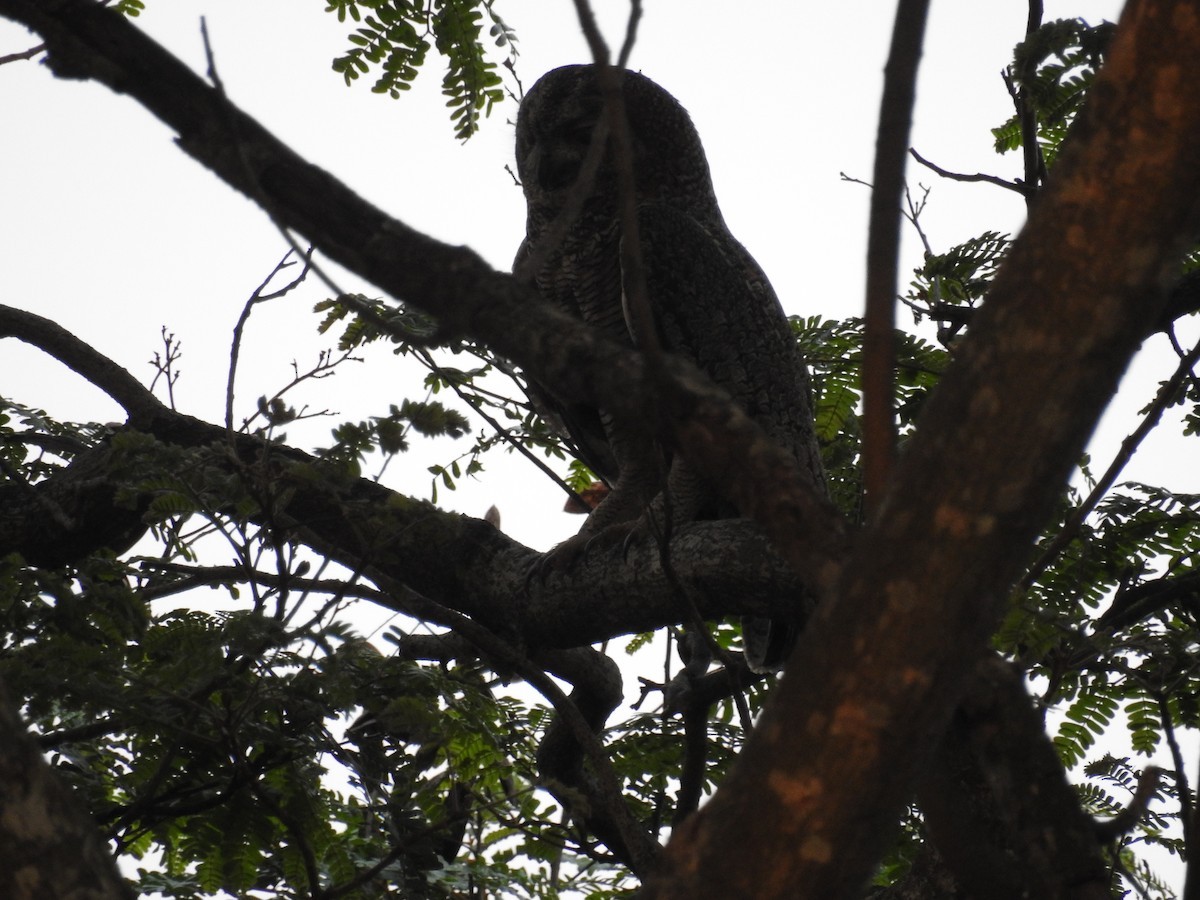Mottled Wood Owl
A species of Earless Owls Scientific name : Strix ocellata Genus : Earless Owls
Mottled Wood Owl, A species of Earless Owls
Botanical name: Strix ocellata
Genus: Earless Owls
Content
Description General Info
 Photo By Ashwin Viswanathan
Photo By Ashwin Viswanathan Description
This large owl lacks ear tufts and is mottled and vermiculated in reddish brown and white. The face disc is marked with fine concentric black and white barring. The sexes are alike. The chin is white. The eyelid is orange and the iris is dark brown. The tail is barred narrowly in brown and black. The concentric barring on the face and mottled crown separate it from the brown wood owl in southern India. There are three subspecies recognized and there are no sharp demarcations in their distributions. S. o. ocellata (Lesson, 1839) is found in southern India and is shorter winged in the males (333–338 mm) than grandis S. o. grisescens Koelz, 1950 is found in northern India south of the Himalayas, west to Pakistan and east to Bihar. The markings are pale above and the males have a wing length of 338–346 mm S. o. grandis Koelz, 1950 from Gujarat is differentiated by the wing length of the males (360–372 mm) 
Size
48 cm
Nest Placement
Cavity
Feeding Habits
Mottled Wood Owl predominantly preys on rodents, shrews, and insects, supplementing with birds, bats, reptiles, and molluscs. Feeding behaviors include nocturnal hunting and foraging, with a notable dietary adaptation for consuming diverse prey, even arachnids.
Habitat
The habitat of mottled Wood Owl encompasses wooded plains and gently rolling lowland hills. These owls are typically found in open woodlands, including clusters of mango, tamarind, and banyan trees. They often reside in densely foliaged trees near the periphery of villages and agricultural areas, predominantly inhabiting lowland regions.
Dite type
Carnivorous
General Info
Feeding Habits
Bird food type
Behavior
These owls roost during the day, usually in pairs. When disturbed they may fly in bright sunshine although they choose to shelter within a dense grove of trees. They produce an eerie chuhua-aa call with a quaver in the second note. This call is an antiphonal duet of the male and female. The male calls one or two times followed by the female's shorter and less tremulous version. The calling is more frequent in November when they begin to breed. Most Nests are found from February to April. They also produce a single note hoot and a screech not unlike that of the barn owl. The nest is a tree hollow in which two to three white eggs are laid. They feed on palm squirrels, mice and other small mammals. 
Distribution Area
The species is found in the plains in gardens and lightly wooded habitats. They roost in trees during the day choosing a branch with dense foliage. An old specimen from Lahore is noted but no records in recent times from Pakistan. The distribution extends east to West Bengal. 

 Photo By Ashwin Viswanathan
Photo By Ashwin Viswanathan Scientific Classification
Phylum
Chordates Class
Birds Order
Owls Family
True owls Genus
Earless Owls Species
Mottled Wood Owl